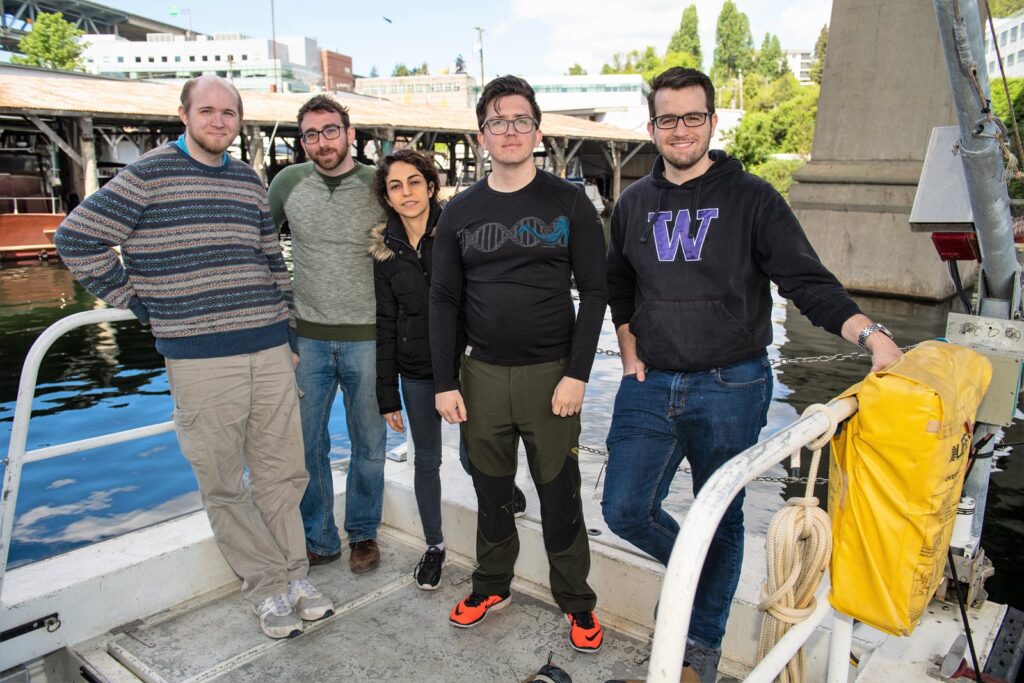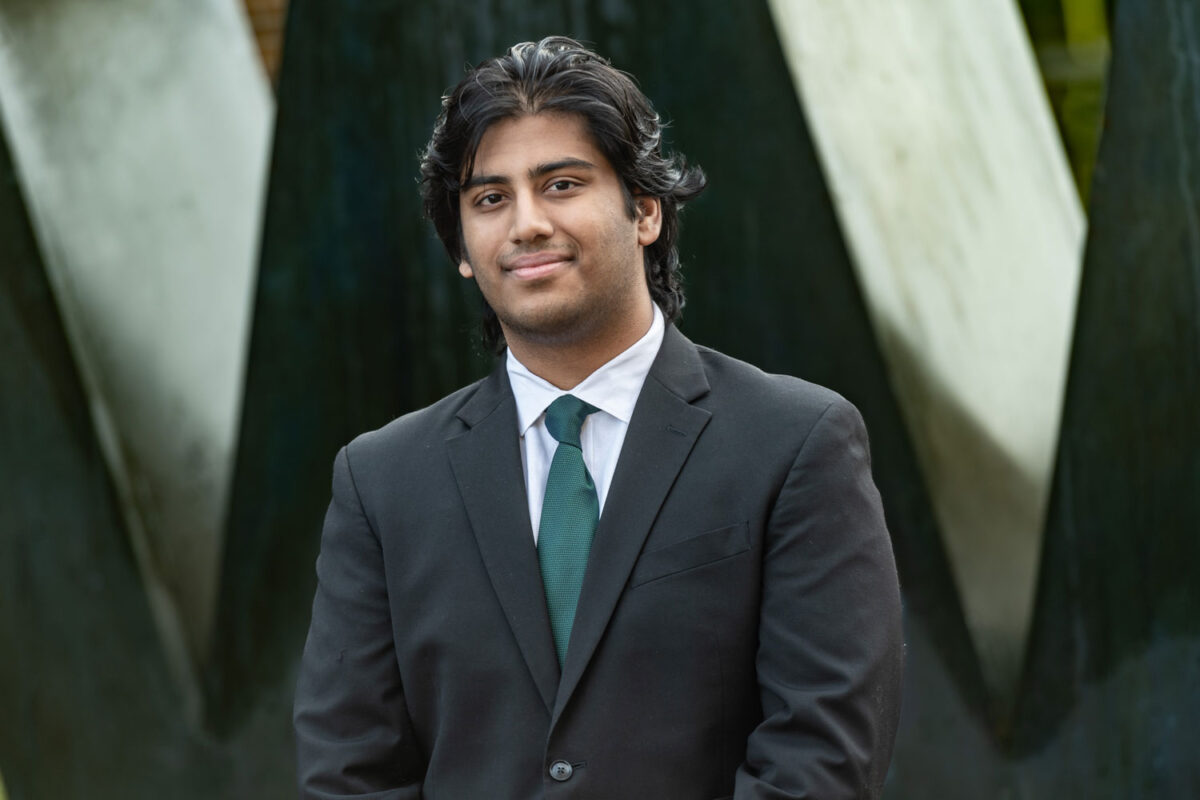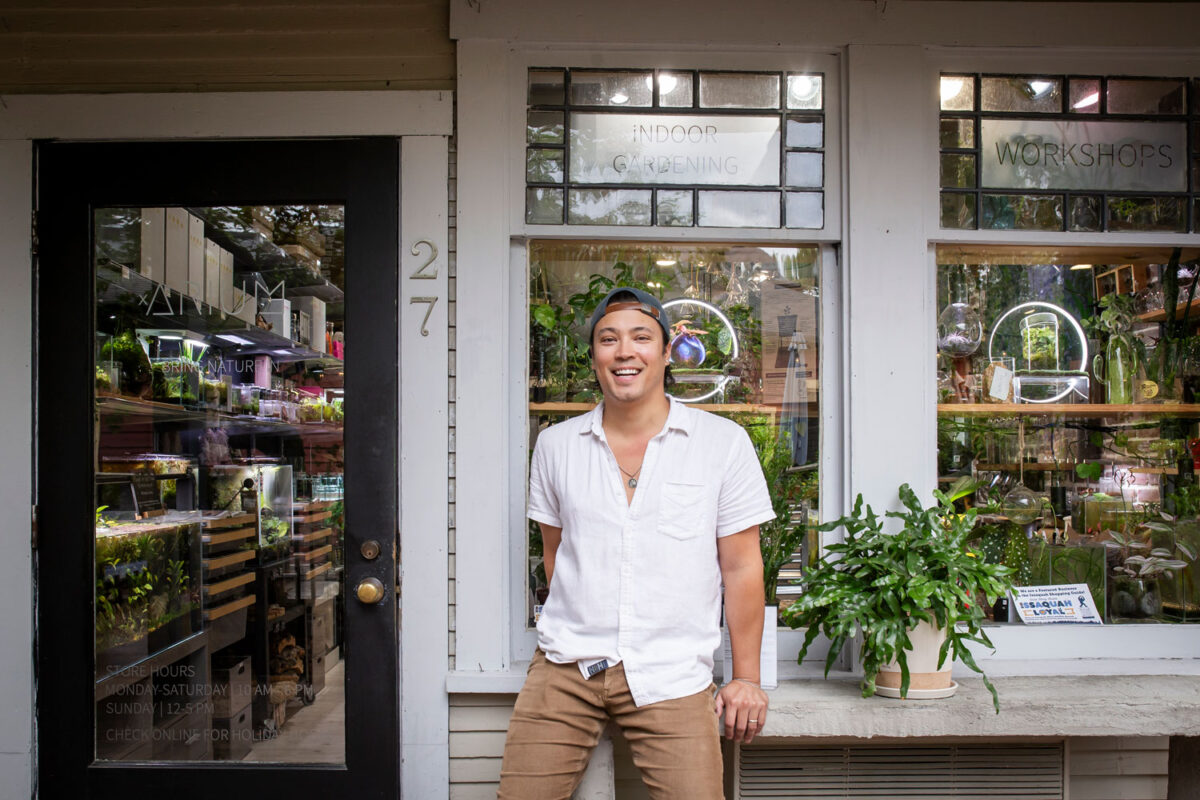
By Douglas Esser
Anyone who lives or works near a highway is aware of the roar of traffic. In Seattle, two major highways cross Lake Washington on floating bridges, vibrating a constant rumble directly into the water. Shima Abadi, an assistant professor in the School of Science, Technology, Engineering & Mathematics at the University of Washington Bothell, wants to know the impact of noise pollution on fish. What does rush hour sound like to a sockeye?
Abadi, who researches underwater acoustics, assembled a team of students to record noise from the Interstate 90 and Highway 520 floating bridges and analyze the data. It’s the capstone project for some senior engineering students and ongoing research for others.
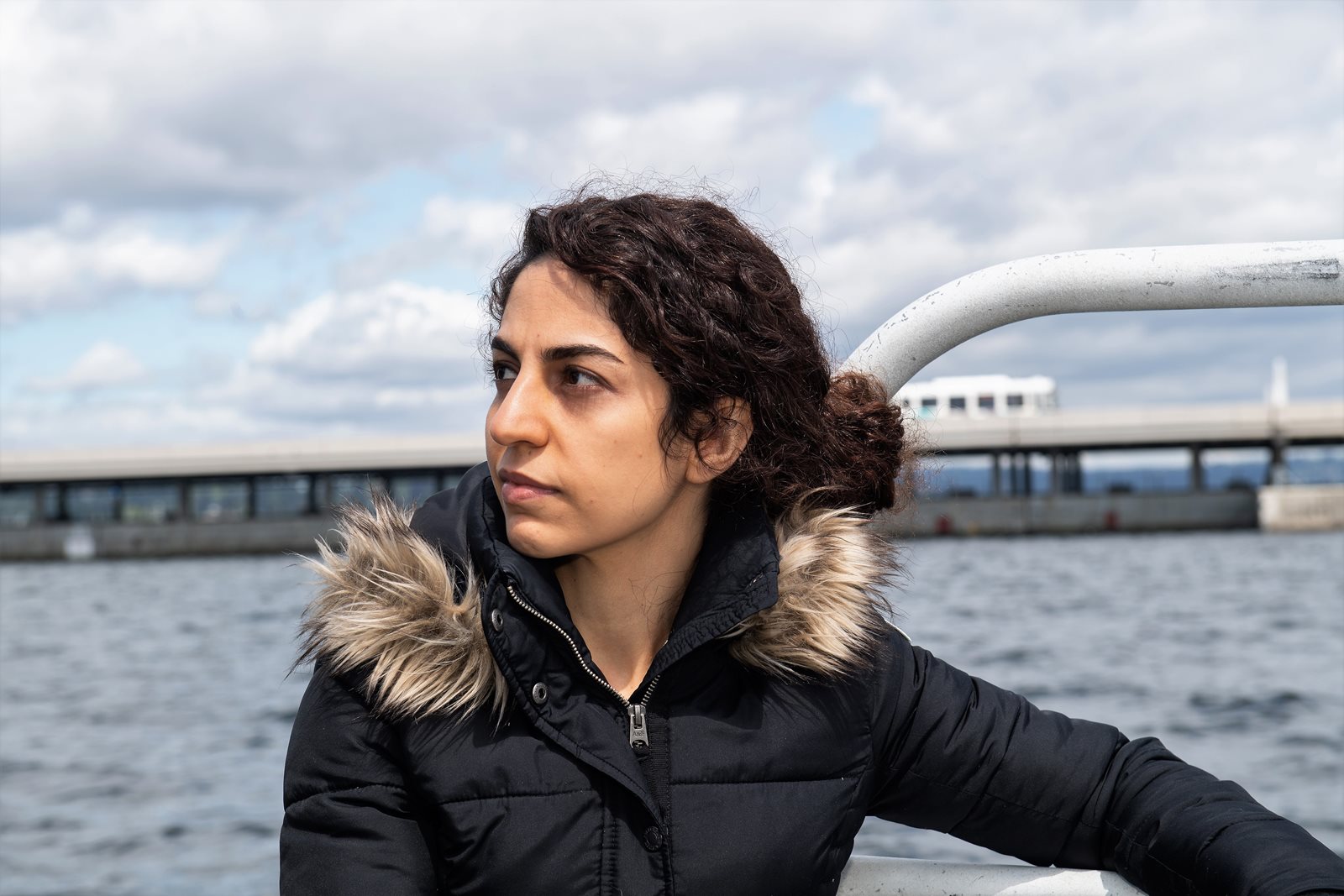
“It’s important to study how much noise is added to the underwater environment and minimize any potential impact,” she said. “How does the sound propagate? What is the structure of the sound, and does it change over time? How much noisier does it become when the traffic load on the bridge increases? What is the impact of the traffic noise on the ecosystem?”
There have been studies of the effects of pile-driving noises, she said, but few on the steady noise from cars and trucks crossing a string of pontoons. To support the work, Abadi received a Microsoft Azure for Research Award that provides cloud computing for near-real time streaming and analysis. The work also received a grant from the UW Bothell Worthington Foundation for Excellence in Technology, Abadi said.
The researchers took to the water May 11 when they dipped a buoy into Lake Washington a few times for an initial test of its recording and transmission systems. The buoy was about the size of a basketball — a cylinder packed with a battery and electronics and wrapped in a blue swim noodle for extra flotation.
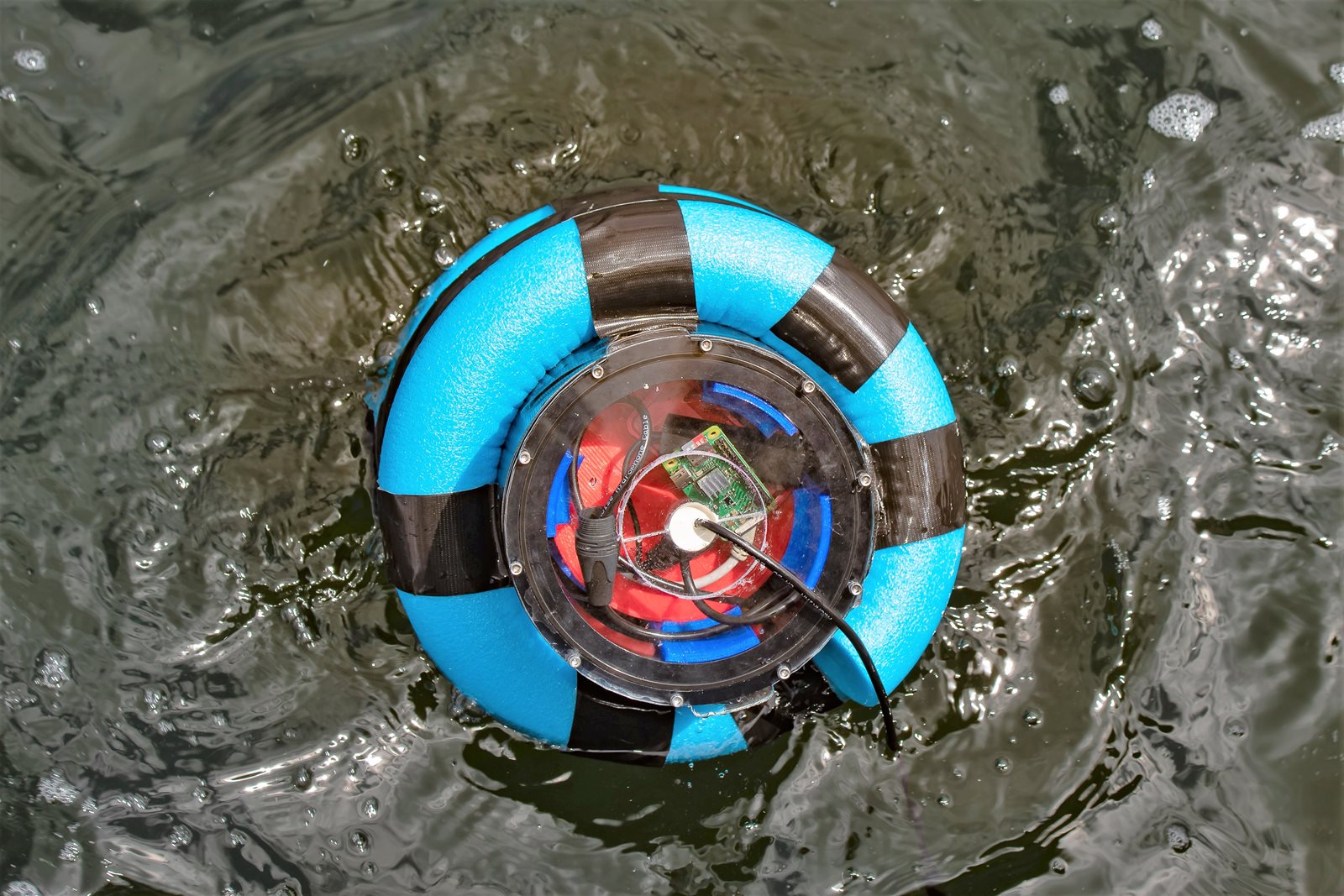
“I had nightmares about this thing sinking,” said Derek Flett, who had been up until 2 a.m. assembling parts, some of which he manufactured on a 3D printer.
Abadi had arranged for a 31-foot workboat from the UW Applied Physics Lab (APL). Steve Kahle, an APL principal engineer, was at the helm for a short trip on the lake.
Abadi had four members of the team on board for the testing: Flett, Michael C. Cook, Jeremy DeHaan and Ryan Berge. Flett and Cook are mechanical engineering seniors (spring ’18) participating as a capstone project. DeHaan and Berge are computing and software systems seniors (spring ’18) participating as independent research. The interdisciplinary team includes two more mechanical engineering students and one electrical engineering student.
They dropped the buoy in several locations within a few hundred feet of both bridges and also in the middle of the lake for some baseline data. The hydrophone dangled about 20 feet deep. Each time the boat would back away for a time to avoid interfering with the sound.
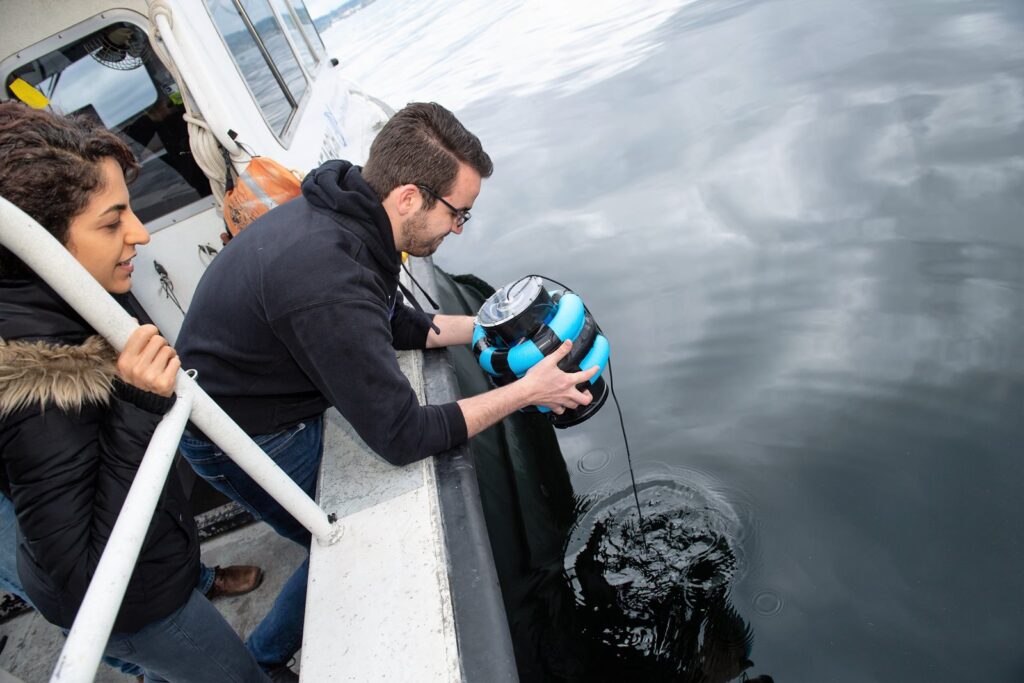
“We want to get some data from underwater so we can see if it even remotely resembles what we were expecting,” said Berge, who programmed the micro-controller in the buoy. He also is part of the UW Bothell robotics club.
DeHaan worked on the cloud-based connectivity and web interface. “This is a good way to get familiar with concepts of uploading information to the cloud,” he said.
Urooj Qureshi (mechanical engineering ’18), a member of the team who couldn’t make the trip, makes sure the research complies with regulations and has necessary permits — “the legal part of the project,” according to Abadi.
Eventually the team plans a solar-powered buoy that would be permanently anchored. The buoy would transmit data to the cloud over a wireless network so it can be controlled from a computer at UW Bothell.
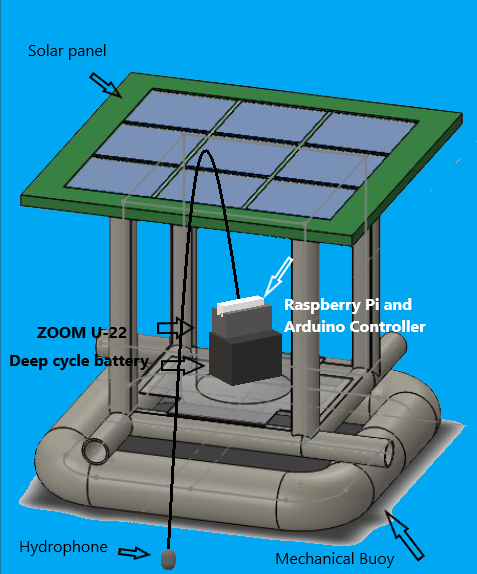
Back at the APL dock, Abadi said it was a good educational experience.
“We got some data. They learned how to deploy. Now it’s time to improve our recorder,” Abadi said.
“We’re going to come back, build upon it and advance this a little further,” said Cook, who helped build the buoy and designed the solar power array.
“These kinds of projects are something I’m very interested in,” said Berge. “I like taking classes but doing long-term, large scale group projects is a more fulfilling experience.”
